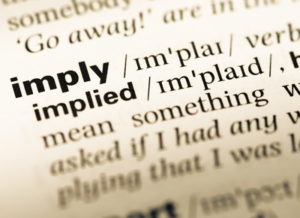 If you are to ever going to win money over the long run in poker, it is absolutely essential that you understand what poker odds are, how they work and how to use them. In order to conquer the mathematical side of poker strategy, working with poker odds is an aspect of the game that you simply cannot ignore.
If you are to ever going to win money over the long run in poker, it is absolutely essential that you understand what poker odds are, how they work and how to use them. In order to conquer the mathematical side of poker strategy, working with poker odds is an aspect of the game that you simply cannot ignore.
What are poker odds exactly? Poker odds are essentially the probability that you can either expect to win or lose or it could be price on offer. It could also refer to how often you need to have the best hand to call a bet.
Essentially, they are the relationship between the size of the pot and the size of the bet. This makes them the odds that you are being offered by the pot for you to make your call with because they are the ratio between the amount of money you must pay to stay in the hand. Every bet, raise, or call, that you make in a game of No Limit Texas Hold’em will come with its own odds.
For example, if there is £10 in the pot and you need to call a £2 bet, then you will be getting pot odds of 5/1. And, likewise, if, with a same size pot, you are required to call a £5 bet, then your odds will become 2/1. In fact, poker odds are the most useful and basic tool at a poker player’s disposal. If you are going to play the game well, you will always need to be considering the pot odds. This is true for when you are offering an opponent odds or if you are the one being offered odds.
Why Is Calculating Poker Odds So Important?
 A good poker player will constantly be assessing the current situation and the way they do this is by calculating poker odds. You will be unable to formulate a profitable plan if you do not possess a true understanding of what the odds are.
A good poker player will constantly be assessing the current situation and the way they do this is by calculating poker odds. You will be unable to formulate a profitable plan if you do not possess a true understanding of what the odds are.
A lot of people – myself included – hate maths and if you are like me and not that kind of person, don’t let this effect you and do not feel at all daunted at the thought of having to master mathematical techniques.
It might take a little time but essentially it is no more difficult than learning basic multiplication tables and it really is worth it if you going to enjoy sustained success at the tables.
How Do Pot Odds Work?
 Ok, so poker odds are the ratio in between the size of the pot and the size of the bet. As an example, let’s say that the starting pot is £10.00 and a player bets £5.00 which is half the pot. In this scenario, then the pot size is now £15.00, and the next player is facing a £5.00 bet.
Ok, so poker odds are the ratio in between the size of the pot and the size of the bet. As an example, let’s say that the starting pot is £10.00 and a player bets £5.00 which is half the pot. In this scenario, then the pot size is now £15.00, and the next player is facing a £5.00 bet.
The decimalised pot odds stand at 15.5 but ideally we would like to reduce the right side of that ratio to a single digit one. As luck would have it, the rules for ration conversion are exactly the same as a standard mathematical equation and what must be done for one side of the decimal so too must it be done to the other side.
If you divide both sides by five the ratio becomes pot odds of 3.1. Should you prefer to work with percentages, simply add both sides together which gives us a percentage mark of four. Next divide 100% by four and we get four equal parts of 25%. Now when we multiply both sides of the 3:1 ratio by 25% we get a ratio of 75%.25%.
By using poker odds in this way, we know that if we are facing an opponent that will bet half of the pot then we can expect to be holding the best hand at least 25% of the time helping us to make a profitable call without any extra effort. Remember, though, that the more you try to predict how things might play out later on in the hand, the more complicated the calculations will become.
What Are The Poker Odds Of…?
- Odds of being dealt pocket aces – 1/221 (0.45%)
- Odds of being dealt a pocket pair – 5.9%
- Odds of making a flush draw – 11%
- Odds of making a straight draw (gut shot straight on the turn) – 8.5%
- Odds of making various hands on the flop – 5/2 (40%)
- Odds of flopping a set with a pocket pair – 11.8%
- Odds of hitting quads / four of a kind on the flop – 0.2%
- Odds of a royal flush – 0.000154%
- Odds of getting a straight flush – 0.0014%
- Odds of getting a full house – 0.1441%
Knowing When to Call a Bet
 During a game of poker, you will find yourself often facing a bet with a hand that will have little to no value at showdown but still retains the potential to become the better hand. In this situation, calling and even raising is known as drawing. The most common types of draws that you will face are flush draws and straight draws. It is critical, then, that you know whether or not you are getting decent enough odds to make a call with a draw.
During a game of poker, you will find yourself often facing a bet with a hand that will have little to no value at showdown but still retains the potential to become the better hand. In this situation, calling and even raising is known as drawing. The most common types of draws that you will face are flush draws and straight draws. It is critical, then, that you know whether or not you are getting decent enough odds to make a call with a draw.
Your initial step should be to calculate exactly how often you will hit your draw. In Texas Hold’em, when we reach the flop there are 47 unseen cards. That is because by now there are three visible community cards out on the board, plus our two hole cards, meaning that, from our perspective at least, five cards have been removed from the potential pack of 52 cards.
If you are holding two cards of the same suit and the board is now showing two cards of the same suit again, then only one more is needed to complete your draw. That accounts for four cards that you know to be suited, leaving nine in the pack to complete the draw. Again with the maths, 47 minus 9 leaves us with 38 cards that cannot complete your draw.
If you have a ratio of 38.9 then this roughly scales down to 4.1 meaning that if you aren’t going to get those pot odds or better then you are unable to call the bet if you are only looking at the odds of the pot.
What About Implied Odds?
 When we begin to factor in and consider the implied odds this subject becomes even more difficult. This is because as well as just factoring in the current pot odds, implied odds also attempt to make a prediction on what will happen in the rest of the hand.
When we begin to factor in and consider the implied odds this subject becomes even more difficult. This is because as well as just factoring in the current pot odds, implied odds also attempt to make a prediction on what will happen in the rest of the hand.
What this means then is that on occasions the pot will not be laying the correct odds even if you decide to take it on and play. This, in turn, means that it is highly possible that you can call a bet getting poor poker odds if you expect to win a big pot when you hit your hand.
As an example, in a game of Limit Texas Hold’em let’s say that your opponent puts £20.00 into an £80.00 pot. Your call would project pot odds of 5/1 because you will be betting another £20.00 in order to win £100. However, if you are expecting your opponent to call a bet or even raise on the river, should you make your hand, your implied odds will become 6/1 or 7/1, so you can see why getting a full understanding of poker pot odds is a crucial skill you will need to master in order to be a continuously successful poker player.
Common Hold’em Odds
On The Flop
| Drawing Hand | # of Outs | Odds of Hitting by the River | $ in Pot Needed per $1 to Call |
|---|---|---|---|
| Open Ended Straight and Flush Draw | 15 | 54% | $0.85 |
| Inside Straight and Flush Draw | 12 | 45% | $1.25 |
| Flush Draw | 9 | 35% | $1.85 |
| Open-ended Straight Draw | 8 | 32% | $2.10 |
| 2x Over cards vs Top Pair | 6 | 24% | $3.15 |
| Two pair to Full House | 4 | 16% | $5.25 |
| Inside Straight Draw | 4 | 16% | $5.25 |
| 1x Over card vs Top Pair | 3 | 12% | $7.35 |
| Pocket Pair to Set | 2 | 8% | $11.50 |
On The Turn
| Drawing Hand | # of Outs | Odds of Hitting by the River | $ in Pot Needed per $1 to Call |
|---|---|---|---|
| Open Ended Straight and Flush Draw | 15 | 33% | $2.00 |
| Inside Straight and Flush Draw | 12 | 26% | $2.85 |
| Flush Draw | 9 | 20% | $4.00 |
| Open-ended Straight Draw | 8 | 17% | $4.90 |
| 2x Over cards vs Top Pair | 6 | 13% | $6.70 |
| Two pair to Full House | 4 | 9% | $10.10 |
| Inside Straight Draw | 4 | 9% | $10.10 |
| 1x Over card vs Top Pair | 3 | 6% | $15.65 |
| Pocket Pair to Set | 2 | 4% | $24 |
